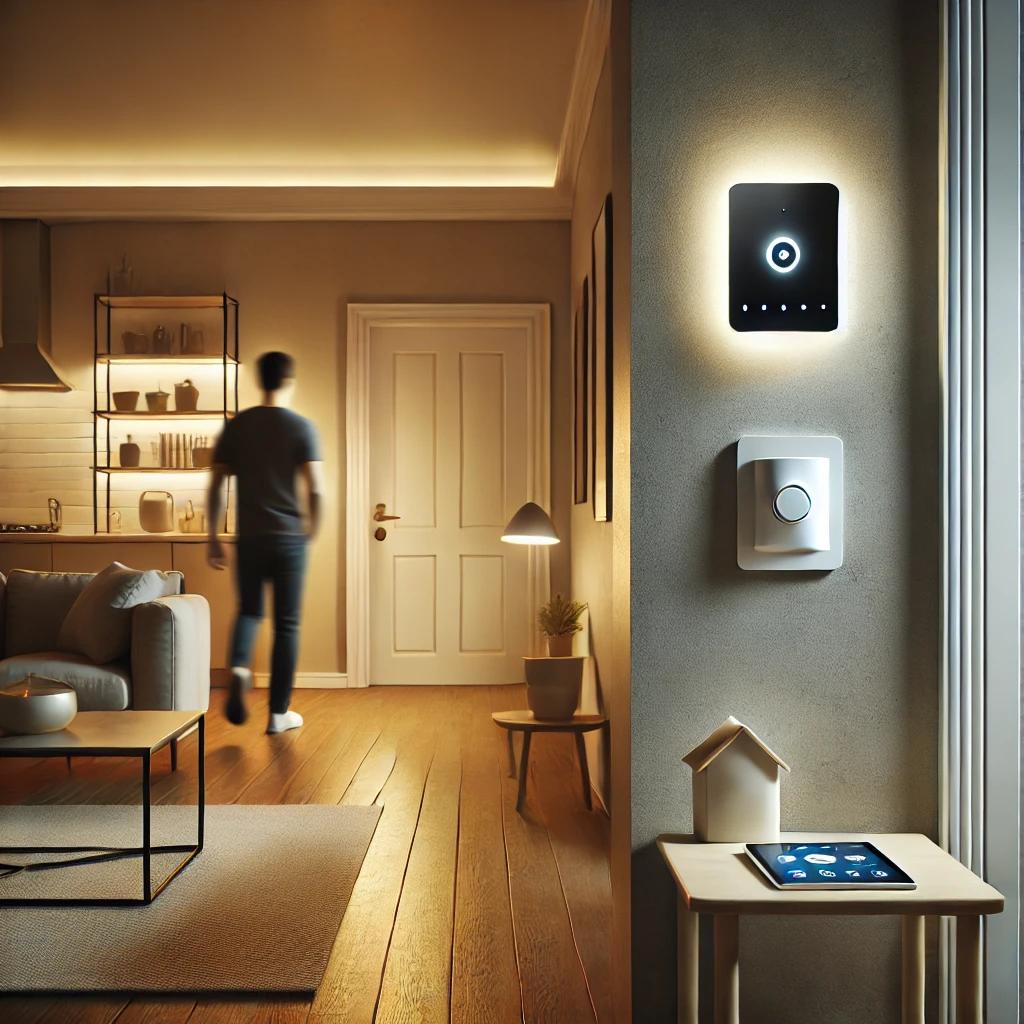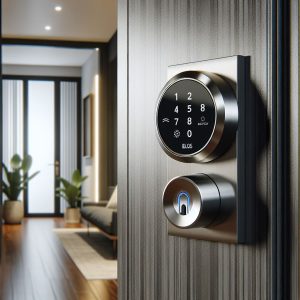Motion detection is a fundamental feature in modern home security systems, adding an extra layer of protection by alerting homeowners to unexpected movement. Used in cameras, lights, and alarms, motion detectors help identify unusual activity around the property. This guide explains how motion detection works, the types of sensors available, and how to optimize these devices for enhanced home security.
1. What is Motion Detection?
Motion detection technology senses movement within a specific area, triggering an alert, recording, or other response. This feature is found in security cameras, lights, and alarm systems and is especially useful for monitoring entry points and high-traffic zones.
Benefits of Motion Detection:
- Immediate Alerts: Receive notifications instantly if movement is detected, allowing for quick action.
- Energy Efficiency: Saves energy by activating only when needed, as with motion-activated lights.
2. How Motion Detectors Work
Motion detectors function by sensing changes in their environment—often through infrared radiation, radio waves, or other forms of energy. When they detect a change, such as a moving person or animal, the sensor signals the connected system to trigger a response, such as lighting or an alarm.
Basic Process:
- Sensing: The detector monitors an area for changes in energy or heat.
- Triggering: When a change is detected, the sensor sends a signal.
- Response: The system activates an action, such as turning on a light or sounding an alarm.
3. Types of Motion Sensors
Different motion sensors serve unique security needs, each with specific capabilities suited to various environments.
- Passive Infrared (PIR) Sensors: Detects body heat (infrared energy) emitted by people or animals. Common in indoor security, PIR sensors are reliable for distinguishing between humans and inanimate objects.
- Microwave Sensors: These sensors emit radio waves and detect movement by measuring frequency changes. They cover longer distances but can be affected by interference from metal objects.
- Dual Technology Sensors: Combines PIR and microwave sensors, reducing false alarms by requiring both heat and motion detection to trigger an alert. Ideal for busy areas where reliability is essential.
- Ultrasonic Sensors: Uses sound waves to detect motion, suitable for small indoor spaces. However, they are more susceptible to noise interference.
- Area Reflective Sensors: Uses LED lights to detect movement by measuring reflections, often used in compact areas like entryways or hallways.
4. Advantages of Using Motion Detection in Home Security
Motion detection enhances home security by focusing on specific movements in designated areas, providing several key advantages.
Advantages:
- Enhanced Monitoring: Detects unusual activity in vulnerable areas like entry points or driveways.
- Reduced False Alarms: Advanced sensors differentiate between humans, animals, and objects.
- Energy Conservation: Activates cameras or lights only when motion is detected, saving energy and reducing costs.
5. Motion Detection in Security Cameras
Many security cameras use motion detection to improve monitoring and reduce data storage needs. Instead of recording continuously, motion-activated cameras only start recording when movement occurs, allowing for easier review of relevant footage.
Camera Features to Look For:
- Sensitivity Settings: Adjust the amount of movement needed to trigger recording, minimizing false alarms.
- Activity Zones: Set specific areas for monitoring, like doorways or windows.
- Remote Alerts: Receive notifications on your smartphone when motion is detected, enabling instant access to live feeds.
6. Motion Detection in Smart Lighting
Smart lighting systems with motion detection enhance security by illuminating areas as soon as movement is detected, surprising and potentially deterring intruders.
Benefits of Motion-Activated Lighting:
- Deter Intruders: The sudden illumination can scare off potential intruders.
- Energy Savings: Lights activate only when needed, lowering electricity consumption.
- Convenience: Illuminates entryways as you approach, enhancing safety.
7. Smart Home Integration for Motion Detection
Integrating motion sensors with smart home devices amplifies their effectiveness. For example, linking motion sensors with security cameras and alarms allows for multiple simultaneous actions, such as recording footage, turning on lights, and sounding an alarm.
Popular Integrations:
- Lighting and Cameras: Motion can trigger lights and activate camera recording at once.
- Voice Assistants: Use Alexa or Google Assistant to set routines based on motion detection.
- Automated Notifications: Receive tailored alerts on your phone for specific motion events.
8. Reducing False Alarms with Motion Detection
Reducing false alarms is crucial in motion detection, as they can be triggered by pets, weather, or passing cars. Advanced sensors provide adjustable settings to minimize these incidents.
Tips to Reduce False Alarms:
- Sensitivity Adjustments: Lower outdoor sensor sensitivity to avoid triggering by small animals.
- Use Dual Sensors: PIR and microwave dual-technology sensors increase accuracy.
- Designate Activity Zones: For cameras, set specific zones to focus only on high-priority areas.
9. Optimizing Motion Sensors for Home Security
Effective motion detection requires proper sensor placement and settings. Consider the most vulnerable areas of your property and adjust settings to match the environment.
Placement Tips:
- Entry Points: Place sensors near doors and windows where intrusions are likely.
- Hallways and Staircases: Monitor movement between rooms for additional security.
- Outdoors: Position sensors in covered areas to protect from rain and direct sunlight.
10. Testing and Maintaining Motion Detection Devices
Regular testing ensures motion detection devices work effectively. Checking sensor functionality periodically helps prevent issues and allows you to address faults before they impact security.
Testing Tips:
- Regular Walk Tests: Move within the sensor’s range to ensure it triggers as expected.
- Battery Checks: Replace batteries in wireless sensors periodically to avoid downtime.
- Clean Sensors: Dust and debris can interfere with accuracy, so keep sensors clean.
Conclusion
Motion detection is a valuable tool in home security, enabling you to monitor specific areas and respond immediately to movement. From security cameras and lights to smart home integrations, motion detection provides versatile protection options for any home. By understanding how motion detection works and optimizing it for your property, you can enhance your security setup and ensure a safer environment.
Whether you’re using basic PIR sensors or advanced dual-technology devices, effective motion detection is a powerful addition to any security system. With thoughtful placement, regular maintenance, and strategic integration, motion sensors can help keep your home one step ahead of potential threats.





